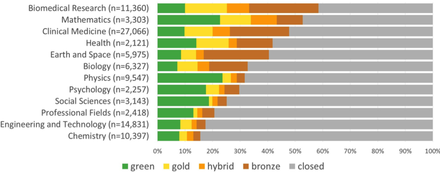The beginning of the XXI century, according to experts, was marked by the next change in technological mode. The sixth technological structure, the structure of nanotechnology, is replacing the structure of computers and telecommunications and is characterized by the rapid development of nano-, bio- and cognitive technologies. The rapid development of genetic engineering, cellular, tissue and immunobiological technologies in medicine is taking place. With the earth sciences journal article citations you can know it all.
The Options for Today
Already today the technology of targeted drug delivery has gained momentum, which will soon be able to “turn over” ideas about the methods of treating the most dangerous diseases – autoimmune, oncological, infectious, etc. New rehabilitation systems, including cyber systems and neurocomputer interfaces, began to be developed and actively introduced. All this changes the habitual appearance of medicine, expands the scope of its traditional capabilities, making it personified, highly specific and effective.

The Rapid Development Options
The rapid development of biomedicine in modern conditions is due to new opportunities arising from the achievements of biochemistry, molecular biology, cell biology, immunology, information and other technologies. To date, the scientific and methodological potential has been accumulated in various fields of biomedical science, which allows us to ensure the transition of biomedical research to a new level and to set tasks, the solution of which until recently seemed impossible.
Among the factors influencing modern biomedical science, first of all, it is necessary to name such as:
Development of genomic, proteomic, metabolic, multiplex, information technologies, visualization technologies that allow to obtain and analyze large amounts of data and fundamentally change the structure and approaches used in biomedical science;
- Development of biotechnologies and molecular medicine, creating the basis for fundamentally new approaches to the treatment of diseases; search and detection of molecular markers of diseases that form the basis for the development of preventive and personalized medicine.
- Integration of related disciplines; development of interdisciplinary research.
- Shortening the path from discovery to implementation, the development of translational medicine.
In addition to new opportunities, the rapid development of biomedicine in modern conditions is dictated by the need that arises in the conditions of rapid technological development of human civilization and poses new challenges in the field of protecting human health.
The factors stimulating the rapid development of biomedical research in the 21st century include, first of all, the following:
- The strategic importance of biomedical research related to the need to ensure the humanitarian well-being and national security of the country.
- Rapid technological development of human civilization, posing new challenges in the field of health and the environment.
A rapidly changing demographic situation (population aging, high migration activity), leading to a change in the age composition of the population, an increase in the risk of epidemics, and an increase in the incidence of returning and new infections.
- A change in the spectrum of diseases that poses new challenges for biomedicine (the widespread occurrence of autoimmune diseases, the growth of antibiotic resistance of pathogens, etc.).
The interdisciplinary nature of modern biomedical research, their importance for the development of such important branches of science and technology as energy, nature management, environmental protection, etc. These features make biomedicine the largest and most rapidly developing branch of science.

